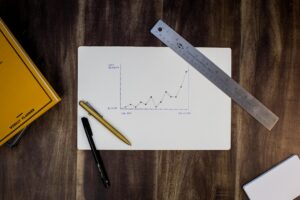The Role of Big Data in the Forex Market
In today’s digital age, big data has become a buzzword across industries, and the forex market is no exception. With advancements in technology and the increasing availability of data, traders and financial institutions are leveraging big data to gain insights and make more informed decisions. In this article, we will explore the role of big data in the forex market and how it is transforming the way traders operate.
Forex, short for foreign exchange, is the largest and most liquid financial market in the world. It involves the buying and selling of currencies to profit from fluctuations in exchange rates. Traditionally, forex trading relied on fundamental and technical analysis, where traders would study economic indicators, market trends, and price charts to predict future price movements. However, with the advent of big data, traders now have access to a vast amount of information that can be used to gain a competitive edge.
One of the main ways big data is revolutionizing forex trading is through the use of algorithmic trading systems. These systems use complex mathematical models and algorithms to analyze large datasets and execute trades automatically. By analyzing historical data, current market conditions, and other relevant factors, algorithmic trading systems can identify trading opportunities and execute trades at a speed and accuracy that is beyond human capabilities.
Big data is also being used to develop predictive models that can forecast currency movements with a higher degree of accuracy. These models incorporate a wide range of data sources, including economic indicators, news sentiment analysis, social media trends, and even satellite imagery. By analyzing and correlating these data points, predictive models can generate forecasts that help traders make more informed decisions.
Another area where big data is making an impact in the forex market is risk management. By analyzing large amounts of historical data, traders can identify patterns and trends that can help them assess and manage risk more effectively. For example, by analyzing historical volatility patterns, traders can determine the appropriate levels of leverage to use and set stop-loss orders to limit potential losses.
Furthermore, big data is enabling traders to gain insights into market sentiment and investor behavior. Social media platforms, online forums, and news articles generate a vast amount of data that can be analyzed to gauge market sentiment. By monitoring these sources, traders can identify trends and sentiment shifts that can influence currency prices. For example, a sudden increase in negative sentiment towards a particular currency may indicate a potential decline in its value.
In addition to individual traders, big data is also being utilized by financial institutions and central banks to monitor and manage the forex market. By analyzing large volumes of transaction data, these institutions can detect and prevent market manipulation, monitor currency flows, and identify potential risks to financial stability. Big data analytics also enable central banks to make more informed decisions regarding monetary policy and intervention in the forex market.
However, it is important to note that while big data has the potential to revolutionize the forex market, it is not a guarantee of success. Traders must still possess the necessary skills and knowledge to interpret and act upon the insights provided by big data. Moreover, the quality and accuracy of the data being used are crucial factors that can affect the reliability of any analysis or prediction.
In conclusion, big data is playing an increasingly important role in the forex market. From algorithmic trading systems to predictive models and risk management, big data is transforming the way traders operate. By leveraging the power of big data, traders can gain insights, make more informed decisions, and potentially increase their chances of success in this highly competitive market. However, it is important to approach big data with caution and to combine it with traditional analysis methods to ensure a comprehensive and accurate understanding of the forex market.






